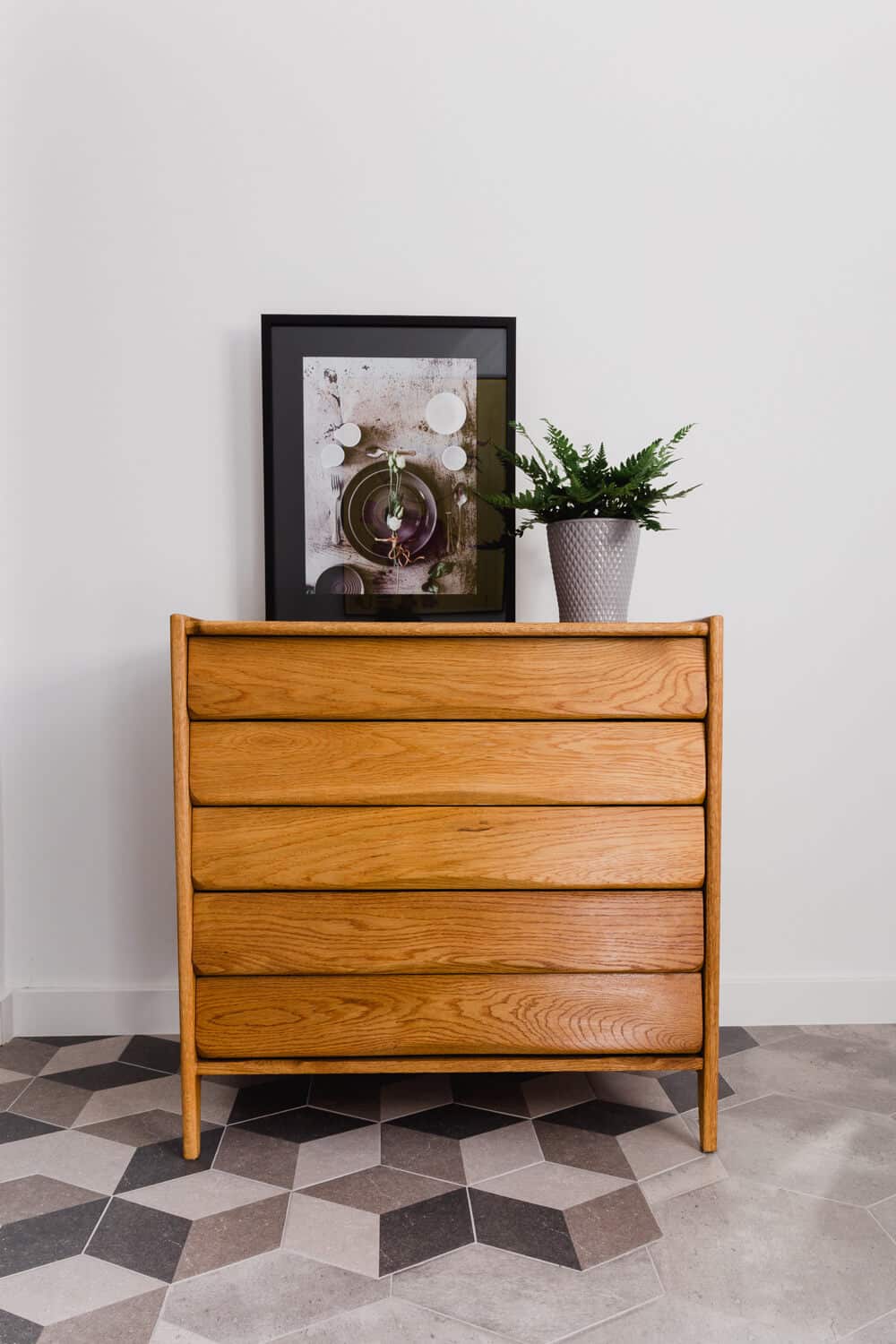Spółdzielnia Artystów Plastyków ŁAD
Many people who visit our website have certainly heard, some know probably more than us, about the Polish ŁAD Cooperative, which was established on October 27, 1926 in Warsaw on the initiative of professors and students of the School of Fine Arts. The name of the cooperative was at the same time its artistic program:
“ŁAD because it is only three letters, because it means it has to be pretty and it has to be an order in it” (‘ład’ in Polish means order).
The cooperative’s goal was to design and manufacture furniture, fabrics, ceramics and other equipment for residential interiors, with a clear desire for perfection of form, material and workmanship – as assumed in the statute. Although it seems unbelievable, the cooperative existed and thrived not only in the period before the Second World War, but also in the times of the Polish People’s Republic (PRL). In the both periods, the cooperative exerted a great influence on Polish design leaving a lot of fascinating projects that can successfully decorate today’s interiors.
Despite the long history and a huge experience, ŁAD Cooperative did not survive the period of transformation and the frenetic beginnings of capitalism and was finally dissolved in 1996.
One day, I will try to explore the reasons underlying the end of this highly deserved institution and write about it. At this point, however, I mainly wanted to present two very different furniture pieces of ŁAD Cooperative, which come from the late 70’s of the previous century. This furniture is an armchair by Józef Bączyk and a commode by Izabela Sternińska.
Why am I showing them together? Well, in my opinion (with which, of course, the Reader does not have to agree) the mentioned pieces are probably the last truly timeless and beautiful projects created by designers associated with the cooperative. Despite honest intentions and searches (in catalogues, on OLX, Allegro, as well as on flea markets), I was unable to find projects created later, which would have had a similar impression on me as two presented projects from the late 70’s of the last century.
Chest of drawers by Izabela Sternińska
The first of the mentioned pieces is so-called “Commode with drawers” designed by Izabela Sternińska. The furniture is made of oak (partly veneered). It belonged in the past to a collector and enthusiast of Polish design from the post-war period. Therefore, the more I am happy about the fact that it was possible to save it from destruction, restore its splendor and show its unique beauty. Stay patient – soon we will show you further gems from the saved collection.
I am charmed by this furniture, mostly because of the profiled shape of the fronts of the drawers. Each of them has a delicate, visible depression in the center, which gives the drawers a streamlined shape, but (surprisingly) it is not used to open them. The drawers are opened thanks to small recesses on both sides, which are not visible from the front. This delicate form looks great in today’s interiors. At the same time, the commode is very functional. In small drawers, it is easy to keep order (Polish: ład) when storing small objects, underwear, jewelry, it is easy to open and close. At the end of this praise for the design of Izabela Sternińska, it is worth emphasizing the noble oak grain.


Armchair by Zenon Bączyk
The second piece of furniture is very rare brutal (at least it seems to me that it’s the right name for this style, however Asia does not full agree with me) armchair designed by Zenon Bączyk. This armchair was produced both from oak (such armchairs can be found in our offer), as well as from ash – an ash copy appeared, among others on the auction of Polish Design at the DESA auction house in autumn 2018: https://desa.pl/pl/auctions/514/object/48982/zenon-baczyk-fotel.
Looking for information about the author of this project, we were very happy when it turned out that the designer is still alive and creates beautiful furniture. A recent interview with Zenon Bączyk can be read here: http://www.biznesmeblowy.pl/ludzie/112/swiadomosc_roli_designu,141.html.
Zenon Bączyk’s project combines simplicity, comfort and, for me, an example of a timeless design. Looking at its almost cubic outline, it could be successfully assumed that it was made in the 21st century, when it is almost 50 years old!
The armchair is very stable, “solid”, but it does not overwhelm the interior in which it is used. Strong construction does not exclude the fact that it is a lightweight armchair and it is easy to move it. In the pictures, it can look like a very large piece of furniture, when it is not really high and, as you can see, it looks good even on a delicate glass floor. Certainly it would be great as a chair for a terrace or balcony, although I would not have dared to leave it at the grace and disgrace of our climate.

If you are interested in more detailed information about selected Polish mid-century modern and PRL projects, or you know any additional curiosities about the described and yet undescribed furniture, I encourage you to leave your comment. If possible, I will try to gather reliable information and share with you.



